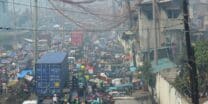FILIPINO novels are often seen by many, especially the younger generations, as something less interesting than the foreign titles they see on the storefronts of bookstores in the country.
But little do they know that these local masterpieces have a lot more to offer.
Reading Filipino novels can help support local authors and the local publishing industry. This can help promote the growth and development of Filipino literature and ensure that the voices and stories of Filipino writers are heard and celebrated.
It can also help improve one’s command of the Filipino language by expanding their vocabulary, learning new sentence structures, and becoming more familiar with the nuances of the language.
More importantly, reading can help Filipinos understand their culture and identity better. These novels often reflect the Filipino way of life, values, and traditions, which can give readers a deeper appreciation and understanding of their roots.
Decolonize your TBR list with these 10 novel recommendations to start your Filipino book reading adventure.
SUGGESTED STORIES:
It’s Officially Happening!: Carlo Aquino, Joshua Garcia, Anne Curtis to cast for ‘It’s Okay to
ABS-CBN Entertainment and Star Creatives officially announced Carlo Aquino, Joshua.
DOH: 12K Pinoys die every year due to accidents
ABOVE all, safety first! An average of 12,000 Filipinos die.
‘Caitlin Clark Effect’? WNBA drew record-high of 2.1M viewers since 2001
ALL eyes on the game debut of Indiana Fever’s NBA.
Gagamba by F. Sionil Jose

Published in 1991, Gagamba is a novel written by the late National Artist for Literature F. Sionil Jose. It tells the story of a man named Tony, who is a security guard at a condominium complex.
The novel explores the themes of power, corruption, and human relationships. Through Tony’s experiences, the novel exposes the dark underbelly of Philippine society, where those in power often exploit and oppress the poor and marginalized.
Gagamba is a compelling novel that underscores the struggles and dilemmas faced by ordinary people in the Philippines. It is a moving critique of the corrupt systems and structures that perpetuate inequality and injustice in the country, and it is an important contribution to Filipino literature.
Stainless Longganisa by Bob Ong

Written by Bob Ong, Stainless Longganisa is a 2005 novel that follows the story of a man named Roberto, who works as a security guard in a gated community.
The novel delves into themes of social class, poverty, corruption, and the struggle for personal identity.
Roberto is a poor man who dreams of a better life for himself and his family. However, his aspirations are hindered by the harsh realities of Philippine society, where the rich and powerful control the fate of the poor.
Stainless Longganisa is a poignant and thought-provoking novel that offers a critical commentary on Philippine society and culture. It is a powerful reminder of the challenges faced by the ordinary people of the Philippines, and the struggle for identity and dignity in a society marked by social and economic inequalities.
Bahay ni Marta by Ricky Lee

Bahay ni Marta is a novel written by Ricky Lee, a well-known Filipino screenwriter and novelist. The novel was first published in 1992, and it tells the story of Marta, a young girl who lives with her family in a small village in the Philippines.
The novel navigates through the themes of poverty, social injustice, and the struggle for personal identity.
Marta’s family is poor, and they live in a small and cramped house in the village. Marta dreams of a better life, but she faces numerous obstacles and challenges along the way.
This heart-rending novel offers a nuanced and insightful portrayal of life in the Philippines. It is a testament to the resilience and strength of the Filipino people in the face of adversity, and it is a reminder of the importance of hope, perseverance, and personal identity in the struggle for a better life.
Para Kay B by Ricky Lee

Para Kay B is another Ricky Lee novel that was first published in 2008 and quickly became a bestseller in the Philippines.
The novel is a collection of love letters written by an unnamed protagonist to his beloved, B. The letters span a period of 30 years, beginning in the 1970s and ending in the 2000s.
Para Kay B touches on the themes of love, loss, and the passing of time and offers a vivid and nostalgic portrait of life in the Philippines during the turbulent decades of the 1970s, 1980s, and 1990s.
Further, it is also a touching and beautifully written novel that captures the essence of love and the human experience. The novel is also a tribute to the power of memory, the beauty of the written word, and the enduring nature of love, even in the face of loss and the passage of time.
Dekada ‘70 by Lualhati Bautista

This classic Lualhati Bautista novel is set in the 1970s, a period of political and social upheaval in the Philippines, and recounts the tale of the Bartolome family, a middle-class family living in Manila during the Marcos dictatorship.
Published in 1983, Dekada ‘70 delivers an evocative and sensitive rendering of Philippine society during the 1970s, including the impact of martial law on ordinary people, the role of the military and police in enforcing the regime’s policies, and the emergence of the resistance movement.
Desaparesidos by Lualhati Bautista

Desaparesidos by Lualhati Bautista was first published in 2003 and tells the story of two women, Lorena and Gilda, who become involved in the search for their loved ones who disappeared during the Marcos dictatorship.
The novel is set in the 1980s and follows the experiences of Lorena and Gilda as they navigate the complexities of Philippine society during the martial law period. Lorena’s son and Gilda’s husband were both “desaparecidos,” which means that they were arrested and detained by the military but were never seen again.
Desaparesidos sheds light on a dark chapter in Philippine history. It is an accolade to the valor and resilience of those who fought against the dictatorship and a reminder of the importance of speaking truth to power in the struggle for social justice and human rights.
Isang Dekadang Resty by Jov Ortua Almero

Isang Dekadang Resty is a coming-of-age novel published in 2021 by Filipino author Jov Ortua Almero. It narrates the heartwarming, decade-long story of Resty as he embraces the changes he faces in his life.
Resty was only six years old at the start of the novel, and he was 16 when it ended. The novel became a sort of voyeurism about the struggles of an only child growing up in a poor family. It also explores the main character’s sexual awakening as he attempts to survive the struggles while living in rural Philippines.
While the novel might seem plotless, it reflects how natural life flows — unimpeded, uncontrolled, and unpredictable.
Isang Dekadang Resty allows its readers to muse on their own lives and to arrive at the realization that the life they currently have is a story they create on their own through the decisions they make.
Lila ang Kulay ng Pamamaalam by RM Topacio-Aplaon

Published in 2015 as part of the Imus Novels series, Lila ang Kulay ng Pamamaalam by RM Topacio-Aplaon is coming-of-age fiction that touches the themes of love, grief, human longing, sexual abuse, mental health disorders, and suicide.
The novel is centered on the story of Dylan and Mayumi, who was later referred to as Lila, as they traverse the complex notion of what it means to love someone and what one can sacrifice in the name of love.
It also helps its readers understand that grief, longing, and loneliness could be unending, and how they could hold someone back from making the most of their lives.
Muling Nanghaharana ang Dapithapon by RM Topacio-Aplaon

Muling Nanghaharana ang Dapithapon is the fifth novel in the Imus Novel series by RM Topacio-Aplaon.
Published in 2015 by the University of the Philippines Press, the novel revolves around the story of a writer named Rafael De Polano as he struggles to rekindle the passion he once had for writing.
In the novel, he meets an aspiring unnamed writer who is currently trying to find her voice in the writing scene while trying to resolve her personal troubles.
Although short, the novel highlights the beauty and splendor of the Filipino language, especially when used in writing.
Topograpiya ng Lumbay by RM Topacio-Aplaon

Topograpiya ng Lumbay is the sixth of the seven novels in the Imus Novel series. Similar to Muling Nanghaharana ang Dapithapon, this novel is connected to the third and central universe of the series: Lila ang Kulay ng Pamamaalam.
Published in 2018 by RM Topacio-Aplaon, the novel centers on the parallel stories of three characters— a writer-journalist, the daughter of a religious leader, and a police officer who was recently dismissed from service—as they attempt to solve the mystery and truth behind a gruesome murder in Tacloban City, Leyte.
These three characters would meet on the island and form an unexpected friendship while working together to achieve their personal missions.
Topograpiya ng Lumbay is an agonizing and gripping novel that touches on the themes of corruption, abuse of power, injustice, and the sexual abuse that happens inside religious cults and organizations.












